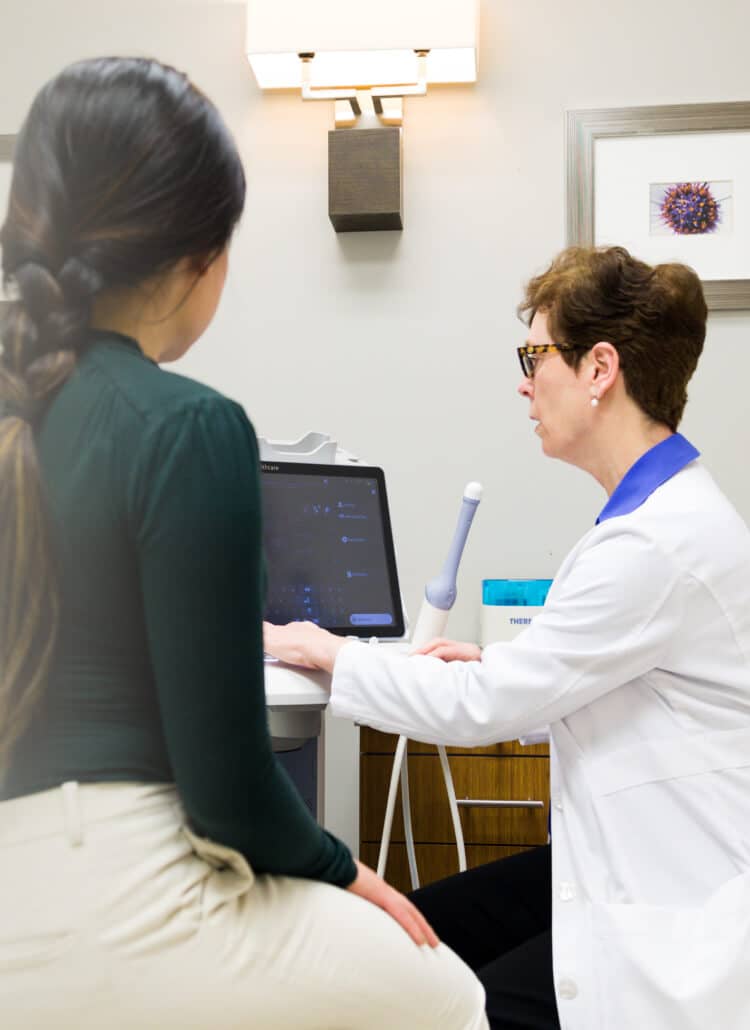Conditions in the fallopian tubes include blockages and adhesions or scar tissue, either of which can obstruct sperm or embryo movement.
Blockage
Blockages can be due to harmless, temporary contractions of the uterine muscle, or to more significant conditions such as infection, inflammation or endometriosis. A condition called hydrosalpinx refers to a fallopian tube that, due to prior pelvic infection has become filled with inflammatory fluid.
Adhesions
Similar to scar tissue, adhesions are bands tissue that may form between the fallopian tubes and ovaries, causing them to stick together. Adhesions can prevent successful ovulation, and also make it impossible for tubes to carry sperm or embryos. Patients at special risk for tubal problems include those who have had prior pelvic infections or faced abdominal problems such as appendicitis or ovarian cyst removal. Many patients with pelvic adhesions, tubal blockage or even hydrosalpinges may not have even been aware of a prior infection because with some bacteria, the symptoms can be very mild.
Diagnosing fallopian tube blockage
Ultrasound. The first test most patients receive, an ultrasound (sonography) uses high frequency sound waves to produce real-time, moving images of the uterus and ovaries. This test is brief, non-invasive and painless. For the ultrasound, the doctor places a transducer in the vagina, in order to view the area and produce images on a screen. A normal fallopian tube is almost always invisible on ultrasound. If it is visible, it may be because there is a hydrosalpinx present.
Hysterosalpingogram (HSG). This is an X-ray examination, also producing real time imagery that allows the doctor to analyze fallopian tube function and check for any blockage. During the X-ray, a small amount of dye is injected into the uterus and fallopian tubes. As the dye disperses, it illuminates any blockages (such as scar tissue or fibroids). The procedure also enables the doctor to view the structure of the uterus itself to see that it is ready to accept a fertilized egg.
HSG is performed in the 2nd week of the menstrual cycle (i.e. after menstrual bleeding has stopped but before ovulation). The entire exam takes about 10 minutes. Side effects, if any, are cramping and bloating. We recommend ibuprofen prior to the procedure. Most women can resume daily activities right away.
Treatment for tubal disorders
Since tubal blockages are often associated with internal tubal damage, the function of the fallopian tubes may be damaged. Tubes are lined with fine hair-like projections on the cells called cilia. When these are damaged, it makes it difficult for the fallopian tube to help a fertilized egg make it's way back to the uterus, leading to failure to achieve a pregnancy or even developing an ectopic pregnancy. For these reasons, we advocate In Vitro Fertilization for tubal infertility rather than trying to open the tubes back up. If a hydrosalpinx is present, we recommend surgical removal or blockage of the tube at the uterine-tubal junction prior to IVF. This is because the inflammatory fluid in the tube can drain back into the uterus and cause an IVF embryo to fail to implant. Learn more about IVF.



